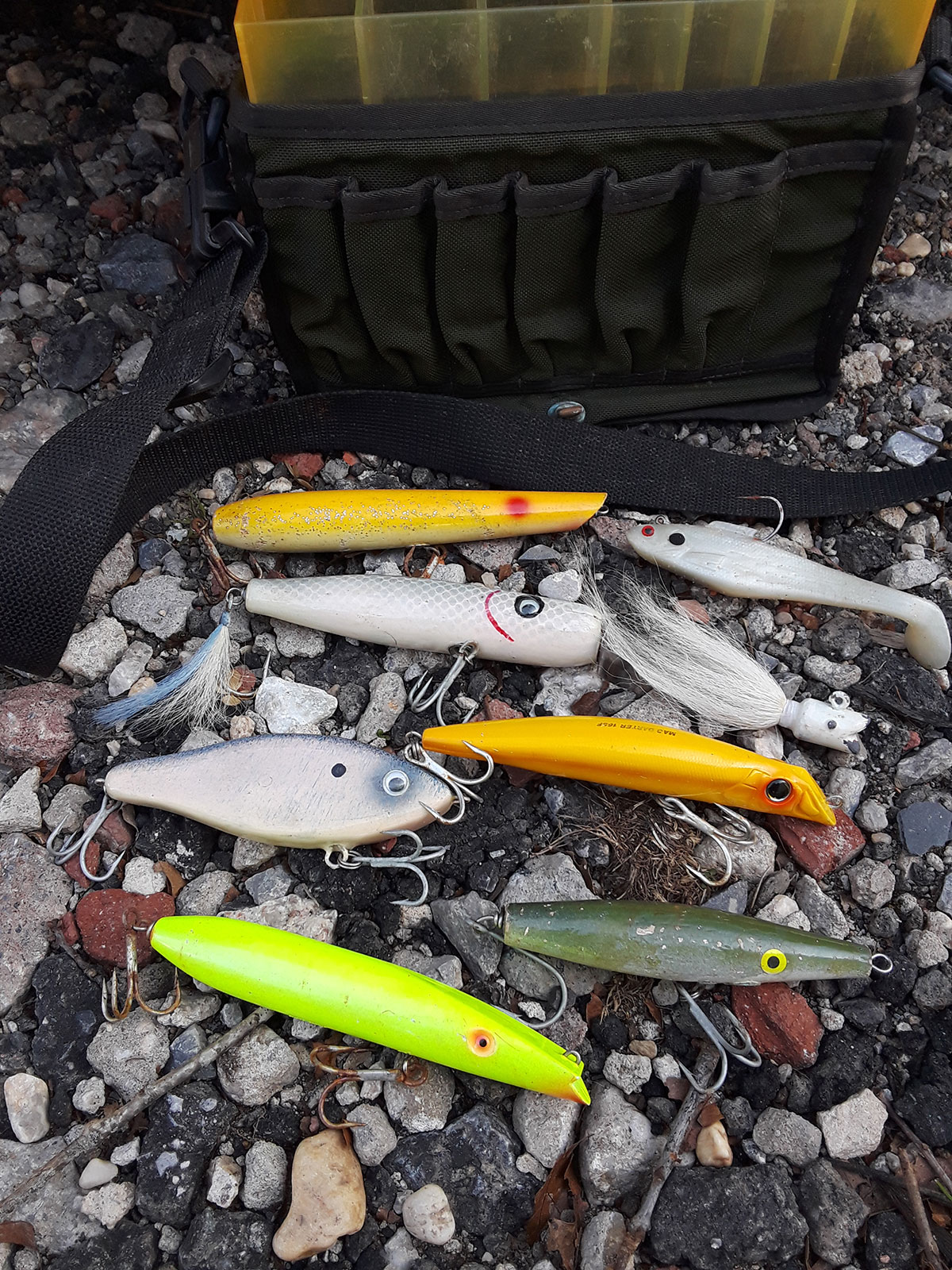
Surfcasters who know how to cover the water column will catch more and bigger fish.
The outgoing current was ripping at a good clip in the deep water I was targeting. I was confident the fish would be hunkered down near the bottom, maybe in a depression or tucked behind a rock that would break the current flow – just enough – to allow the fish conserve energy. From that position, the fish could engulf any passing prey with a simple flare if its gills, vacuuming up the unsuspecting baitfish in a flash. The current was cranking and the water was pretty deep, so I selected a 4-ounce bucktail and lobbed it up current, letting it sink into the depths. As it drifted along and down, I slowly retrieved, just quickly enough to stay in contact while imparting a short jigging action, trying to swim the jig along the bottom. After a few casts to get the feel for the drift, I felt a deep thump and set up on a nice striped bass.
This is just one example of reading the situation and choosing the right lure for the segment of the water column where I believed the fish to be waiting. A heavy plastic shad would have been another good choice in this situation. Obviously, something that swims on or near the surface would have been a waste of time as the bass, hugging the bottom, probably wouldn’t even know it was there.
Simply stated, the water column is a basically a cross-section of the water you’re fishing, a slice stretching from the surface to the bottom, where a fish could be feeding. As plug fishermen, our job is to figure out where in the water column the fish are feeding and how to present a plug, within that level of the water column, to get a bite.
Let’s say for instance you’re fishing a back bay area in the spring, and fish are slurping up shrimp on the surface. Here you want to try and match the hatch and stay on or just below surface. Tossing a small soft plastic, or a swimming plug with a shrimp pattern teaser could prove deadly. This is also a great opportunity to break out the fly rod and float a shrimp imitation along. You wouldn’t want to throw a 3-ounce bucktail in this situation because the fish are keying on the surface where their prey, the shrimp, are swimming.
Conversely, when fishing a sand eel bite on an ocean beach, getting down in the water column and choosing lures that mimic the forage is paramount. Tsunami weighted sand eel, various tins with a tube, or a bucktail, as well as a sinking needlefish, are some of the classic choices for hooking up under these conditions. These offerings will put you in the right part the water column where the fish are feeding, with a profile that the fish are looking for.
When you find yourself in a situation where it’s not obvious what the fish are feeding on and where in the column they’re holding, switching into what I call ‘exploratory mode’ is wise. Basically, I try to cover the column methodically. If conditions are favorable, I might start with a metal lip surface swimmer, or a floating needlefish, and then work my way down with a subsurface swimmer such as an SP Minnow or a Mag Darter for probing the middle third of the water column.
To get a little deeper, standard darters, deep diving metal lips, and bottle plugs as well as slow sinking glide baits will do the trick and they cover a wide variety of forage profiles as well. If the water is really deep and you want to get down near the bottom, sinking needles or fast sinking glides can be allowed to drop down before starting the retrieve, and of course bucktails and heavier rubber shads are tailor made for these presentations.
Fish can be feeding in any level of the water column; from insane daytime blitzes to picky bottom bites with sparse forage. One of the biggest keys to surfcasting success is learning to read the water and the situation to come up with the proper presentation. But remember, things aren’t always as they seem, for example, during those wild daytime blitzes, dropping a shad or bucktail below the frenzy may result in a much larger fish. Going into any surfcasting situation with the goal of ‘covering the column’ will put you in the driver’s seat, no matter what Mother Nature throws your way.



